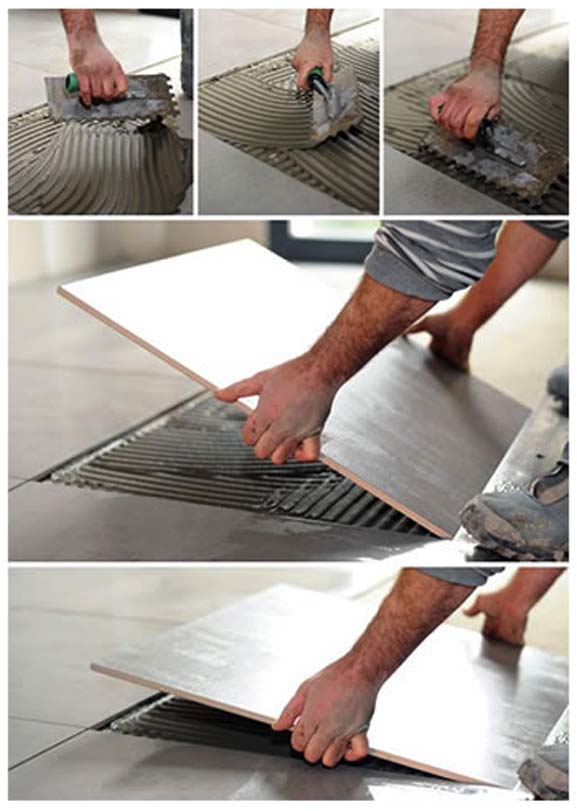Porcelain And Ceramic Tile Installation
Installing porcelain tile is a process; proper preparation of the base is an absolute necessity for a successful installation. Don’t let this dissuade you from a DIY porcelain tile installation! Below ... Read More
GETTING STARTED
Download Installation Guide>PREPARE
1. The success and longevity of tile installation relies on a solid base. Unless you are dealing with new construction, this usually means removing the original flooring material before you install your new tile.
2. Ceramic and porcelain tile should be installed on a clean, level and rigid floor. If your floors flex or have uneven areas, repair and add support where needed. Follow up with a cement board or fiber cement underlayment. Both are resilient to moisture and impervious to liquids.
3. Choose your installation pattern. There are an endless number of options, and the pattern should reflect the overall tone and look you are trying to achieve.
4. Map out your installation. Measure to find the center of a room on two opposite walls and use these points to snap a chalk line across the room. Do the same on the other walls to create perpendicular line, and check to make sure they are square.
5. Dry fit your tile starting from center point, leaving enough spacing for grout joints. The goal is to work with as many full tiles as possible.
INSTALL
1. Begin laying the tile from the center of the room, using your reference lines as your guide.
2. Spread thinset with the notched edge of a trowel. Larger tiles require more thinset and a larger notched trowel.
3. As you lay your tile, you can use plastic spacers to help ensure you have straight grout lines. You will remove the spacers before the thinset dries.
4. Clean up any excess thinset immediately using the manufacturerʼs instructions.
5. After a few rows of tile are installed, set them with a tile level and a mallet.
6. As you reach the perimeter of the room, snap and score or cut and adjust tiles to complete. This is necessary during the installation process.
7. Allow the tile to set according to the manufacturerʼs instructions. Grout the tile.
8. Clean the tile surface with a damp sponge and clean water.
9. We recommend wet cutting or the score and snap method during the installation process. Improper installation techniques could expose installer to harmful silica dust.
10. Do not dry cut using power tools during the installation process. Using dry cutting methods could present a risk of acute lung injury. If adequate ventilation cannot be achieved, wear a mask or respirator.





